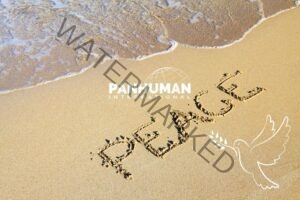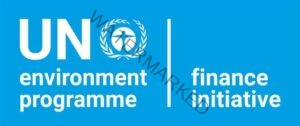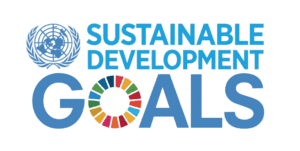
The Institute for Economics and Peace (IEP) has released its fifth annual Ecological Threat Report (ETR) 2024, offering an in-depth analysis of global ecological risks and their implications for societal stability. The report highlights critical issues such as climate change, food insecurity, and water scarcity, establishing their connection to increased armed conflict and societal fragility. This year’s edition provides a roadmap for mitigating these challenges, emphasizing sustainable practices, improved governance, and enhanced water management systems.
The Ecological Threat Report (ETR) 2024 evaluates ecological threats across 207 countries and territories, covering 3,518 sub-national areas that collectively account for 99.99% of the global population. Focused on key ecological challenges such as food insecurity, water risk, demographic pressure, and hazardous natural events, the ETR provides a critical assessment of global vulnerabilities.
Key Findings
Ecological Threats and Conflict Dynamics
Ecological threats, including water scarcity, food insecurity, and demographic pressure, exacerbate social instability and increase the likelihood of conflict.
Countries with high ecological risks tend to exhibit low societal resilience and governance capacity, leading to compounded crises.
Without strategic interventions, ecological degradation will accelerate, resulting in malnutrition, forced migration, and rising conflicts.
Global Hotspots and Vulnerabilities
The ETR evaluates 207 countries, identifying 50 with high or very high ecological threats.
Nearly two billion people are projected to live in these high-risk regions by 2050, up from the current 1.3 billion.
Sub-Saharan Africa faces the most severe threats, driven by food insecurity, water stress, population growth, and weak governance.
Sub-Saharan Africa: An Urgent Focus
The region’s population is expected to grow by over 70% by 2050, intensifying pressure on food and water resources.
Agriculture production must more than double to meet basic food needs, highlighting the urgency for sustainable farming practices and improved water capture technologies.
Investments in irrigation systems and better agricultural practices could triple yields, reducing hunger and poverty while boosting economic activity.
Water Scarcity and Solutions
Water risk is more closely linked to poor infrastructure and governance than to rainfall levels.
Sub-Saharan Africa has significant untapped potential for agriculture, with 200 million hectares of arable land and 35 million hectares suitable for irrigation.
An estimated annual investment of $15 billion in water infrastructure and farming improvements could raise cereal production by 50% by 2050.
Regional Insights and Global Relevance
Sub-Saharan Africa emerges as the most ecologically vulnerable region, with high levels of food insecurity and water stress compounded by weak governance. However, lessons from this region are applicable globally:
South Asia and South America face water challenges in glacier-fed ecosystems, while Southeast Asia grapples with rising sea levels affecting fertile lands.
China and India, home to 2.8 billion people, are increasingly exposed to extreme weather patterns threatening food production.
International Water Disputes pose risks, exemplified by conflicts over the Nile and Mekong Rivers, affecting downstream communities.
Ecological Threats as Conflict Multipliers
IEP’s analysis highlights that ecological threats do not directly cause violence but act as “threat amplifiers” that intensify existing tensions:
The Sahel Region: Accounting for 6.8% of Africa’s population but 16% of conflict deaths, this area illustrates how ecological stress and weak governance fuel unrest.
Ethnic Divisions: Historical ethnic boundaries increase the likelihood of conflict by 27%.
Agro-Pastoral Conflicts: Livestock-reliant communities in Africa experience heightened tensions, often exploited by extremist groups to escalate violence.
Despite these challenges, most farmer-herder interactions remain peaceful, suggesting that community-based governance structures can effectively prevent conflicts.
Proposed Solutions and Investments
Water Capture and Distribution
Micro water capture technologies and enhanced irrigation systems can address water scarcity and boost agricultural productivity.
Targeted investments can generate threefold increases in yields, recouping costs within 4–7 years.
Agricultural Improvements
Sub-Saharan Africa’s cereal production can be expanded by over 50% through irrigation, fertilizers, and best practices.
Maize yields could potentially increase by 600% with appropriate investments.
Governance and Societal Resilience
Strengthening local governance and infrastructure is critical to mitigating ecological risks and preventing conflicts.
Community-based approaches leveraging local power structures and social norms can enhance stability.
International Collaboration
Building Resilience for the Future
The Ecological Threat Report 2024 underscores the urgent need for global cooperation to address ecological risks. While climate change and environmental degradation serve as catalysts for instability, the report emphasizes that proactive measures—such as improving water management, enhancing agricultural practices, and reinforcing governance—can mitigate these threats and foster resilience.
Without significant intervention, the convergence of ecological pressures, demographic growth, and weak governance could lead to escalating cycles of instability. However, with strategic investments and whole-system approaches, the most vulnerable regions, particularly sub-Saharan Africa, can transform ecological challenges into opportunities for sustainable development and peacebuilding.
Key Takeaways
The 2024 ETR underscores that without coordinated international efforts, escalating ecological degradation will heighten social tensions and conflicts worldwide. Climate change, population growth, and ongoing conflicts serve as compounding factors that amplify these challenges.
Rising Ecological Risks
Ecological risks are intensifying due to climate change, population growth, and conflict.
A strong correlation exists between ecological degradation, poverty, and the incidence of conflict.
Countries Facing High Threat Levels
Fifty countries, home to 1.3 billion people, face high or very high levels of ecological threat.
Projections indicate that the population in these nations could increase to nearly 2 billion by 2050.
Ecological Hotspots
The ETR identifies 27 ecological hotspot countries where extreme ecological risks intersect with low societal resilience, increasing their vulnerability to instability, conflict, and humanitarian crises.
Of these 27 countries, 19 are in sub-Saharan Africa, and four are in the Middle East and North Africa. Many are already experiencing conflict or civil unrest.
Conflict Prevention and Local Governance
Effective conflict prevention strategies in agro-pastoralist communities rely on strong local governance structures.
Community-based approaches to governance have proven more successful than external interventions in mitigating conflicts.
Regional Insights:
Sub-Saharan Africa
Sub-Saharan Africa has the lowest irrigation rates globally, with only 1.8% of cultivated land being irrigated.
Improving water collection and management could significantly reduce ecological pressures.
An estimated annual investment of $15 billion in water capture and agricultural enhancements through 2050 could boost food production in the region by 50%.
Middle East and North Africa
Four hotspot countries in this region are particularly vulnerable to water scarcity and demographic pressures.
Climate-induced migration and resource competition continue to exacerbate existing tensions.
Methodology and Projections: The ETR employs a multi-faceted approach, analyzing threats at national, subnational, and city levels. It evaluates these threats in conjunction with societal resilience and levels of peace. The report highlights the countries, districts, and cities most at risk, enabling policymakers to prioritize their focus effectively. Furthermore, projections extend to 2050, offering insights into future trends and potential hotspots.
Policy Recommendations: The 2024 ETR emphasizes the importance of resilience-building policies and contingency planning to address ecological threats. Key recommendations include:
Investments in Water and Agriculture: Allocating $15 billion annually to water management and agricultural initiatives to enhance food security.
Strengthening Local Governance: Empowering local communities to develop conflict-prevention strategies.
International Cooperation: Promoting cross-border collaboration to mitigate ecological risks and support vulnerable nations.
Data-Driven Decision Making: Using impartial, data-based assessments to design effective policies and allocate resources efficiently.
Final Thoughts: The Ecological Threat Report 2024 provides a data-driven foundation for understanding and addressing global ecological challenges. With climate change, demographic pressures, and resource scarcity intensifying, the report calls for immediate, coordinated actions to build resilience and prevent conflicts. By highlighting the most vulnerable regions and offering actionable insights, the ETR serves as a crucial tool for policymakers, researchers, and humanitarian organizations working to safeguard global stability and sustainability.
PANHUMAN INTERNATIONAL: For Peace. For Humanity. For Progress.













